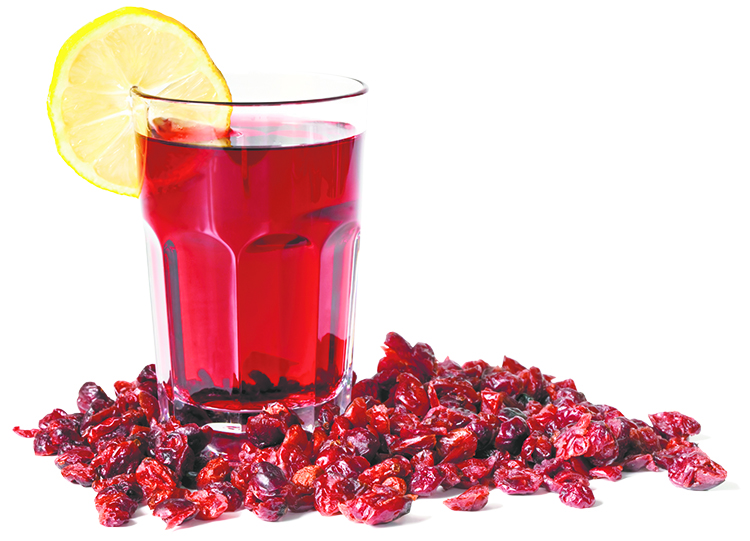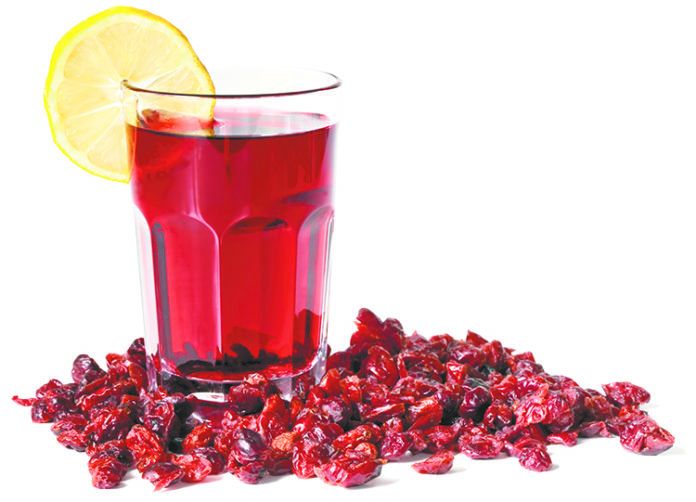The start of a new year makes a perfect jumping-off point for healthier eating habits. Whether you adopt formal new years resolutions or just take a silent vow to make smarter choices, 2013 can be the year when you give your meals a healthy “makeover.”
“Even small changes add up,” says Alice H. Lichtenstein, DSc, director of Tufts HNRCA Cardiovascular Nutrition Laboratory. “You can make changes one shopping trip at a time, one meal at a time.”
While there are many nutrition-smart switches you can make in your meals, Tufts experts came up with these 13 ideas to get you started on a menu makeover in 2013:
1 PICK MORE WHOLE FRUIT INSTEAD OF JUICE. While starting the day with a glass of OJ is fine, when you opt for juice instead of whole fruits youre sacrificing fiber while adding calories. A cup of juice contains only half a gram of dietary fiber, compared to three grams in a whole medium orange. And even the healthiest juice contain calories-110 in a cup of OJ-that dont make you feel “full.” Lichtenstein warns, “Also, lots of calories can slide down the throat quickly.”

Look for ways to incorporate more fruit in your meals. Top your breakfast cereal or yogurt with berries. Round out your lunch with an apple or a pear. Turn fruit into dessert.
2 SKIM FAT FROM YOUR DAIRY PRODUCTS. What kind of milk are you pouring on that morning cereal? If its not already fat-free, you have an easy opportunity for a healthy switch. The fat in milk is mostly saturated (4.5 grams in a single cup), the chief culprit in high LDL cholesterol. The American Heart Association advises: “If youre used to whole-milk products (3.5% fat), you may find it easier to taper off slowly. Try 1% low-fat milk first, then change to % low-fat milk. Soon youll be able to switch to fat-free milk with no trouble.”
Think low-fat and fat-free for all your dairy products, such as yogurt and cottage cheese. Low-fat dairy intake has been linked to a reduced risk of diabetes, hypertension and stroke, lower inflammation, improved muscle mass and slimmer belly fat, and of course its a good source of calcium to protect your bones.
3 REDISCOVER OATMEAL. More affordable than boxed breakfast cereals and 100% whole grain, oatmeal contains soluble fiber shown to lower LDL cholesterol. Beware, though, of sugary toppings and mixes containing much more than just healthy oats. Instead, add flavor with fresh or dried fruit, cocoa powder, nuts and even nut butters. See our January 2012 recipe for steel-ground oatmeal porridge for more topping tips and ideas for speeding preparation, such as soaking oats overnight. Remember that you can cook up a big batch and then package into individual portions, which will keep up to four days in the fridge or four months in the freezer.
4 SWITCH YOUR SANDWICHES TO WHOLE-GRAIN BREAD. Lichtenstein recommends going whole-grain in the bread aisle, for everything from sandwiches to toast. But buying “whole-wheat” or “whole-grain” bread can be confusing. Look for the Whole Grains Councils “100% Whole Grain” stamp and check ingredients for terms like whole wheat (or other grain); “multigrain” or “stone-ground dont necessarily mean bread is truly whole grain.
Research by Tufts Nicola McKeown, PhD, and colleagues has shown that whole grains can help fight the belly fat thats linked to heart disease and diabetes. Refined grains like white bread, however, can cancel out those benefits.
5 SKIP THE EXTRA CALORIES FROM SPREADS. Just one tablespoon of regular mayo can top your sandwich with nearly 100 calories and 1.5 grams of saturated fat; a tablespoon of butter adds 102 calories and a whopping 7.3 grams of saturated fat. To add moisture to your sandwiches, top with a slice of tomato or other juicy vegetable instead. One slice of tomato has only four calories, essentially zero fat and plenty of healthy nutrients-including lycopene, which may lower your risk of stroke (see page 1). Or spread mustard instead of mayo, with only 10 calories per tablespoon.
6 DIP SMARTER. Appetizers can benefit from a makeover, too. Says Lichtenstein, To reduce calories and saturated fat, exchange sour cream-based dips in favor of hummus and white-bean dips. Both are tasty ways to work more legumes into your diet; among their many health benefits, legumes such as beans and chickpeas (also called garbanzo beans, the base for hummus) have been associated with improved cholesterol levels and lower risk of diabetes. Another option instead of sour cream, says Lichtenstein, is no-fat Greek yogurt.
7 STOCK UP ON BONELESS, SKINLESS CHICKEN BREASTS. These convenient protein sources are a staple in the healthy-eating freezer, ready at hand for entres ranging from grilled chicken to stir-fry. Not only do you lose the skin, but its easier to trim away any remaining visible fat. Ounce for ounce, a skinless chicken breast has only about 60% of the calories and a quarter the saturated fat of a skin-on breast. When shopping, look for smaller breast portions and avoid those “enhanced” with extra sodium.
8 GO FISH. The American Heart Association recommends eating at least two meals of fish per week, preferably varieties such as salmon that are highest in heart-healthy omega-3 fatty acids. (See page 3 for a list of good choices.) But the benefits of serving fish at least twice a week go beyond the positive nutrients-its also the less-healthy entres youre not eating because youre having fish instead. Skip breaded, fried fish and rich sauces.
9 MAKE YOUR RICE BROWN. Besides the benefits of swapping a refined grain for whole grain, research suggests people who eat more white rice are at greater risk for diabetes-but eating more brown rice was associated with a reduced risk. One possible explanation is that, in addition to losing potentially protective nutrients in refining, white rice has a higher glycemic index, which affects blood sugar. You can compensate for brown rices longer cooking times by making large batches and freezing them, or by taking advantage of the many precooked, microwavable brown rice products now available.
10 MAKE ROOM FOR VEGGIES. Even as youre improving the quality of your grains, Lichtenstein says not to do so at the expense of vegetables. “Exchange half the grains or other starches on your plate for vegetables,” she suggests, “to increase your vegetable consumption and decrease calories.” After all, Americans eat plenty of grains and starches, but consistently fall short on vegetables, which also are less concentrated sources of calories: A half-cup of broccoli contains only 27 calories, while the same amount of white potatoes has 57 calories-before you ladle on butter or gravy.
11 LIGHTEN UP YOUR MASHED POTATOES.You can also make those potatoes on your plate healthier, by using buttermilk in mashed potatoes instead of whole milk, butter and/or cream. Despite its name, buttermilk is actually a healthy yet tasty substitute in lots of recipes; a half-cup of low-fat buttermilk has only 49 calories and less than a gram of saturated fat, but provides 142 milligrams of much-needed calcium for your bones.
12 COOK WITH BROTH INSTEAD OF CREAM. Lichtenstein suggests using low-sodium, fat-free broth instead of cream for making sauces, soups and gravies. You can always thicken the broth with a little cornstarch dissolved in water; one tablespoon of cornstarch adds just 30 calories.
13 SAVE DESSERT FOR SPECIAL OCCASIONS. You may have grown up ending every dinner with dessert, but think about it: Do you really need a bowl of ice cream, a piece of cake or a slice of pie every night? Such a daily indulgence can undo all your smart choices the rest of the day. Satisfy your sweet tooth with fruit instead, and make other types of dessert a special treat-youll enjoy it more.
























